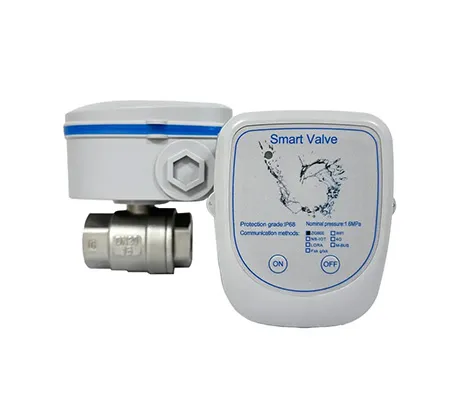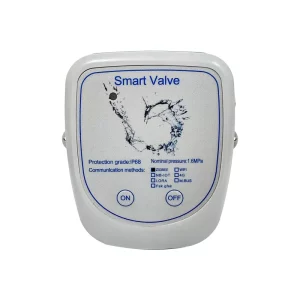Чтобы избежать задержки ответа на ваш запрос, пожалуйста, укажите ваш WhatsApp/WeChat/Skype вместе с сообщением, чтобы мы могли связаться с вами в первый же момент.
Мы ответим вам в течение 24 часов. Если для срочного случая, пожалуйста, добавьте WhatsApp: +8613188899036, или WeChat: 0531-87968777. Или позвоните 0531-87968777 напрямую.
* Мы уважаем вашу конфиденциальность, и вся информация защищена. Мы будем использовать вашу информацию только для ответа на ваш запрос и никогда не будем отправлять нежелательные электронные письма или рекламные сообщения.
Are your industrial systems wasting energy with every flow? Do you cringe each month when the utility bill arrives? You’re not alone. Many plants and buildings today run on old valve systems that leak money through wasted energy and unplanned shutdowns.
Think about it. When a valve fails, production stops. When pressure control is poor, energy bills soar. When manual systems need constant attention, your team’s time slips away—time that could be spent growing your business.
What if there was a smarter way? A way to cut energy costs by 45%, reduce downtime by 40%, and extend equipment life by up to 40% with next-generation valve technology?
Интеллектуальные клапаны are not your grandfather’s flow control devices. They combine traditional valve functions with датчики, приводы, и IoT-соединение to create smart systems that think for themselves.
Unlike old manual valves that sit in one position until someone adjusts them, интеллектуальные клапаны can:
“The difference between traditional valves and intelligent valves is like comparing a light switch to smart home lighting,” says one expert. “One is on or off, while the other adapts to your needs.”

Look at these troubling facts:
| Проблема | Statistic | Влияние |
|---|---|---|
| Old Plants | 40% of global facilities >30 years old | High maintenance costs |
| Failed Shutdowns | 2/3 of planned shutdowns fail | Lost production time |
| Safety Incidents | Beijing refinery fire: $18M loss | Human and financial toll |
| Энергетические отходы | Up to 50% of energy lost in poor systems | Unnecessary costs |
These problems don’t fix themselves. In fact, they grow worse each year as equipment ages and energy costs rise. Manufacturing facilities need solutions that work today while preparing for tomorrow’s challenges.
Companies like Наварх understand these industry pain points, focusing their research and development on creating valve solutions that address efficiency, safety and long-term reliability—all critical factors in modern manufacturing.
At their core, intelligent valves use real-time data monitoring to make smart decisions. The technology combines several key components:
These components work together in a feedback loop. When sensors detect a change in pressure, temperature, or flow rate, the system sends signals to actuators that adjust the valve position. This happens in milliseconds, allowing for precise control that manual systems can’t match.
Modern intelligent valves connect to SCADA systems и cloud platforms through protocols like Modbus, HART, и PROFINET. This integration lets plant managers view and control valve performance from anywhere.

How Intelligent Valves Work
The most immediate benefit of intelligent valves is improved efficiency. Consider these real-world results:
A building manager in Chicago reported: “After installing умные водяные клапаны, we saw our water bills drop by nearly a quarter. The valves detected leaks we didn’t even know we had.”
Предиктивное обслуживание is changing how facilities manage equipment. Instead of waiting for valves to fail or scheduling maintenance based on time, smart systems tell you when service is actually needed.
Studies show predictive maintenance delivers:
Manufacturing facilities that adopted intelligent valve systems with predictive analytics report fewer emergency repairs and more planned maintenance—saving both time and money.
One energy-saving control system installed in a Midwest factory paid for itself in just 11 months through reduced downtime and lower energy costs. The factory manager noted that their production capacity actually increased without adding equipment.
The safety benefits of intelligent valves can’t be overstated. When valves fail in critical systems, the results can be catastrophic.
Fail-safe mechanisms in modern intelligent valves provide multiple layers of protection. If communication is lost or power fails, the valves can automatically move to a safe position.
This level of protection comes from rigorous testing and quality control—something manufacturers like Наварх emphasize with their multi-stage testing processes before any product ships.
The oil and gas sector was among the first to embrace intelligent valve technology. With remote pipelines spanning harsh environments, companies needed reliable systems that didn’t require constant human monitoring.
One offshore platform reported:
The дистанционный мониторинг capabilities were particularly valuable, allowing engineers onshore to diagnose issues without expensive helicopter trips to the platform.
Municipal water systems face unique challenges: aging infrastructure, tight budgets, and increasing demand. Intelligent valves help these systems do more with less.
A water treatment plant in Arizona implemented умные водяные клапаны with these results:
“The valves paid for themselves in water savings alone,” reported the facility manager. “The reduced maintenance was just a bonus.”
In factory settings, precise temperature and pressure control impacts both product quality and energy costs. Modern facilities use intelligent valves as part of broader промышленная автоматизация strategies.
Case study results include:
These improvements came from systems designed specifically for the unique challenges of each facility—an approach that requires both technical expertise and deep industry knowledge.
Selecting the ideal intelligent valve system means matching technical specifications to your specific needs. Consider these key factors:
Valves must withstand the fluids they control. Options include:
Leading manufacturers offer products in various materials to ensure управление потоком components maintain integrity in your specific operating environment.
Your choice of communication protocol impacts how valves integrate with existing systems:
“The right protocol choice can make integration seamless or impossibly complex,” notes one system integrator. “It’s not just about the valve—it’s about how it talks to everything else.”
Look for these key certifications:
These standards ensure the valves meet rigorous safety and performance requirements for specific applications.

How to Choose the Right Intelligent Valve
An aging refinery faced frequent valve failures, causing expensive shutdowns and safety concerns.
Each unplanned shutdown cost approximately $150,000 per hour, with some lasting days. Management feared a catastrophic failure could lead to injuries or worse.
Implementation of IoT-connected intelligent valves with predictive diagnostics from a specialized manufacturer.
Результаты:
“We moved from constantly fighting fires to actually preventing them,” said the maintenance manager. “The system tells us which valves need attention before they fail.”
A growing city faced water shortages and high pumping costs due to system inefficiencies.
Water loss through leaks reached 28% of total production. Energy costs for pumping were rising 8% annually. The city faced possible water use restrictions.
Installation of intelligent valve system with pressure regulation and leak detection capabilities.
Результаты:
The city’s water director commented: “These valve systems have transformed our operations. We’re saving water, energy, and money while providing better service.”
A large library building struggled with inconsistent temperatures and high energy bills.
Energy costs ran 40% above comparable buildings. Some areas were too hot while others were too cold. Visitors complained about comfort issues.
Implementation of intelligent valve system with thermal management integration and zone control.
Результаты:
“The investment in smart valve technology transformed our building,” said the facility manager. “The system essentially tunes itself as conditions change.”
The intelligent valve market is projected to reach $9.8 billion by 2030, growing at 6.3% annually. This growth is driven by several emerging trends:
Tomorrow’s valves won’t just report problems—they’ll predict them with increasing accuracy. Machine learning applications will analyze patterns across thousands of valves to identify subtle signs of future failure.
“We’re moving from valves that say ‘I’m broken’ to valves that say ‘I’ll need maintenance in 37 days based on my current performance trends,’” explains an industry analyst.
Edge computing brings processing power closer to valves, reducing latency for critical applications. This means faster reactions to changing conditions—critical in processes where milliseconds matter.
Future systems will incorporate more embedded systems that make decisions locally while still reporting to central monitoring systems.
The next generation of intelligent valves will emphasize energy recovery and zero-leakage design. As energy costs rise and environmental regulations tighten, these features will become essential rather than optional.
Manufacturers with strong research and development capabilities are already working on valves that not only control flow but actively recover energy from pressure differences in the system.
How do intelligent valves differ from traditional valves?
Traditional valves are mechanical devices that control flow based on manual adjustment or simple on/off automation. Intelligent valves add sensors, communication abilities, and autonomous decision-making. They can adjust themselves based on changing conditions and report their status to central systems.
Can retrofitting existing systems with smart valves save costs?
Yes! Many facilities achieve significant savings by strategically replacing critical valves with intelligent alternatives. While full system replacement offers the greatest benefits, targeted upgrades can provide excellent return on investment.
What cybersecurity risks exist for IoT valves?
As with any connected technology, intelligent valves require proper cybersecurity measures. The risks include unauthorized access, tampering with valve positions, and data theft. Modern systems incorporate encryption, authentication, and secure firmware updates to protect against these threats.
How long does it take to see ROI from intelligent valve installation?
Most facilities report ROI periods of 8-24 months, depending on the application. Energy-intensive operations often see faster returns, while applications focused on maintenance reduction may take longer to realize full benefits.
Can intelligent valves work in facilities without existing automation?
Absolutely! Many intelligent valve systems can work independently while still providing significant benefits. As facilities grow their automation capabilities, these valves can be integrated into broader systems.
When selecting intelligent valve technology for your facility, consider:
The best solutions come from manufacturers with deep industry knowledge who can provide not just products, but complete системная интеграция. Companies that offer comprehensive engineering support ensure the technology performs optimally in your specific conditions.
Facilities that choose partners with proven manufacturing experience tend to report higher satisfaction and better long-term results. Look for manufacturers with rigorous quality control processes and the production capacity to meet your current and future needs.
The data is clear: intelligent valves deliver measurable benefits across industries. From energy savings to improved safety, the technology represents a significant leap forward in industrial process control.
As aging infrastructure demands replacement and energy costs continue to rise, facilities face a choice: continue with traditional technology or embrace intelligent systems that pay for themselves through improved performance.
The most successful organizations are choosing partners who understand both the technology and the industry context—companies that can deliver not just valves, but solutions to complex operational challenges.
Is your facility ready to make the intelligent choice?

Smart valves reduce energy use by 45% in HVAC systems [5](https://www.searchenginejournal.com/google-e-e-a-t-how-to-demonstrate-first-hand-experience/474446/) and cut water waste by 25% [3](https://www.searchenginejournal.com/google-e-e-a-t-how-to-demonstrate-first-hand-experience/474446/)
Predictive maintenance cuts costs by 25% and extends equipment life by 40% 8
AI monitoring reduces accidents by 60% [1](https://huggingface.co/jd445/AnnualBERTs/resolve/main/2014/vocab.txt?download=true)
Smart valve market to reach $9.8B by 2030 [1](https://huggingface.co/jd445/AnnualBERTs/resolve/main/2014/vocab.txt?download=true)